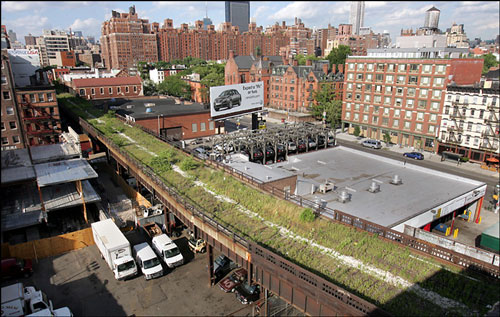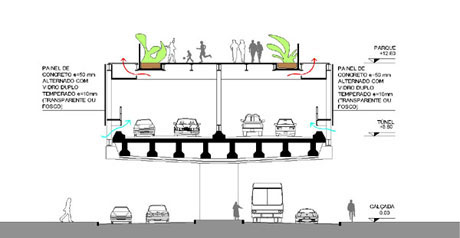
Found on http://djbarney.wordpress.com/2007/12/08/new-us-air-force-aircraft-carrier-unveiled/
ArchMedium is a new project, recently launched with collaboration of the Architecture School of Barcelona and the Polytechnic University of Catalunya. The platform organizes international architecture competitions for students. The objective is to offer students the opportunity to become familiar with this kind of event, see how other students from other parts of the world deal with the same challenge and at the same time compete and get their project published.

The first competition has just started its inscription period. The project consists in designing the first Urban Center of Sustainable Transports in Barcelona.
More information at www.archmedium.com

Call for Papers
February 2, 2010
OPEN CALL
JAFSCD welcomes articles at any time on any subject related to the development
aspects of agriculture and food systems.
Faculty and students, Extension and other educators, planners, consultants, staff
with farm agencies and farm and community organizations, and farmers are are
encouraged to submit applied research papers, commentary, and thought-provoking
articles that inform the emerging field of agriculture and food systems development.
Topics include, but are not limited to:
– conservation and farmland protection,
– value-adding,
– cooperative marketing, value chains, distribution, farm labor,
– market research, consumer decision-making drivers,
SPECIAL TOPIC CALL: Best Practices in Urban and Peri-Urban
Agriculture Development
Articles may address the following, among other topics:
– Urban livestock management and regulation
– Urban market gardening and backyard gardening
– Aquaculture and hydroponics
– Marketing and value-adding
– Waste management and reuse
– Urban farming by immigrant or other special populations
– Farming on the fringe
Deadline: June 5, 2010
(The deadline may be extended with permission of the publisher.)
More background on this topic is at www.AgDevJournal.com
This major artery in the transport system of São Paulo occupies both sides of the river Tietê. Together with its continuation along the river Pinheiros it connects inner São Paulo with the various federal highways that lead to the coast and the hinterland. The construction of a supersized ring road, the Rodoanel, was supposed to alleviate the expressways that cross the city. However, even before the completion of the ring road, it has become clear (for some at least) that this will not be sufficient.

Governor José Serra has launched a new expansion project for the Marginal do Tietê, increasing the number of lanes on both sides as well as the number of flyovers across the river. Serra believes the project will diminish the size of the traffic jams and therefore save lots of time and fuel.
The project is criticized by left wing activists, ecologists, architects etc, stating that it is fundamentally a wrong decision, because the road system is eternally insufficient. Examples like Los Angeles (USA) show clearly that the continuous road building policies are just never enough. Stimulating the use of the automobile in practice means stimulating sprawl and extensive use of the metropolitan territory, something that many good urbanists and politicians have been fighting against over the last decade. Former mayor Paulo Maluf, (in)famous for his own massive infrastructure projects back in the 1970’s, thinks it’s a great idea and criticizes ecologists and basically everyone else who might be against it. Architect Oscar Niemeyer suggested the demolition of the entire Marginal do Tietê and moving it to somewhere else. That also doesn’t seem satisfying.
Recreational use of the Tietê river in the early twentieth century
The Tietê riversides today

It is estimated that traffic in the metropolis, which already suffers massive infarcts, will worsen by 40% during construction. There is wonderful news though: in the middle of the expanded 20 lane expressway there will be a brandnew bicycle path, for those who can stand the fumes of the cars and the polluted river at the same time, while they dream of also having their own airconditioned automobile.
Plan for the urbanization of the Tietê riversides in the nineteen thirties
Read more:
São Paulo Government
www.novamarginal.sp.gov.br/
Comments by architect Fernando de Mello Franco (Vitruvius/ folha de São Paulo 17 September 2009, in Portuguese)
www.vitruvius.com.br/minhacidade/mc277/mc277.asp
Rio Tietê website (Portuguese)
http://riotiete.sites.uol.com.br
Blogpost criticizing the construction (Portuguese)
http://scienceblogs.com.br/rastrodecarbono/…
Check realtime traffic jams in São Paulo
http://cetsp1.cetsp.com.br/monitransmapa/painel
Column by Reinaldo Azevedo: Marginal Tietê – O fedor do autoritarismo (11 September 2009, in Portuguese)
http://veja.abril.com.br/blog/reinaldo/…

In many metropolises there are examples of old infrastructure that have become partially or entirely redundant because of new developments in transport and urbanization. Automatically the question arises of what to do with the leftover structures: Demolish them, or maintain them for different usage?

After demolishing the Boston inner city expressway the whole trajectory was rebuilt underground, during the operation called “the Big Dig”, costing almost $ 15 billion. In São Paulo a design competition was held in 2007 to either demolish or re-use the “Minhocão”, an elevated expressway of almost 3 km. In Paris there is the Promenade Plantée, a garden planted on a railway viaduct that ceased to function as such in 1969. In Rotterdam will shortly arise a new living and recreation area around the old “Hofpleinlijn” elevated railway tracks. And in New York a very special recreation area is being built on the Highline.



Read more:
Slide show of the Highline NY project, both artist impressions and photo´s of the construction site
www.flickr.com/photos/friendsofthehighline/…
Winning project of the Minhocão competition by José Alves and Juliana Corradini, adding a park roof while maintaining the traffic function
www.vitruvius.com.br/institucional/…
Other highlines
www.thehighline.org/newsletters/…
Urban study of the Hofpleinlijn, Rotterdam by DAF architects
http://issuu.com/daf-architecten/docs/hofpleinlijn
[Thanks to Reonald Westerdijk for his info about Highline New York]